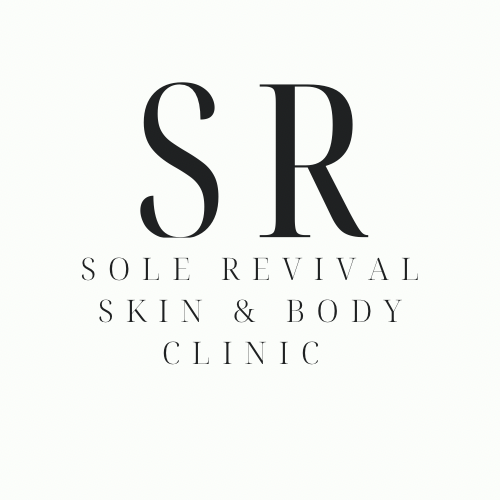Anti- aging treatment options
There are several anti-aging treatments available, ranging from topical solutions to medical procedures. The “best” treatment often depends on individual skin types, concerns, and desired results. Below are some of the most effective and widely recommended anti-aging treatments:
1. Retinoids (Retinol and Retinoid Creams)
• How it works: Retinoids, derived from Vitamin A, are widely regarded as one of the most effective anti-aging treatments. They accelerate cell turnover, reduce fine lines, and promote collagen production.
• Benefits: Improve skin texture, fade age spots, reduce wrinkles, and enhance overall skin tone.
• Considerations: Can cause irritation, redness, or peeling when starting. Sunscreen is a must when using retinoids.
2. Botox (Botulinum Toxin)
• How it works: Botox temporarily relaxes muscles that cause wrinkles, particularly in areas like the forehead, between the eyebrows, and around the eyes.
• Benefits: Reduces the appearance of dynamic wrinkles (those caused by facial expressions). Results typically last 3–6 months.
• Considerations: Requires regular maintenance treatments. Results can appear unnatural if overdone.
3. Dermal Fillers (Hyaluronic Acid, Collagen, etc.)
• How it works: Fillers add volume to areas of the face that have lost fat or elasticity, such as under the eyes, in the cheeks, and around the mouth.
• Benefits: Immediate results in restoring volume, plumping up wrinkles, and enhancing facial contours.
• Considerations: Results last anywhere from 6 months to 2 years, depending on the type of filler used.
4. Chemical Peels
• How it works: Chemical solutions are applied to the skin to exfoliate the top layer, stimulating collagen production and revealing fresher skin underneath.
• Benefits: Reduces fine lines, improves skin texture, and fades age spots or hyperpigmentation.
• Considerations: May require recovery time depending on the depth of the peel. It can also be irritating for sensitive skin.
5. Laser Treatments
• How it works: Laser treatments use light energy to target deeper layers of skin, stimulating collagen production and improving skin texture. Fraxel and CO2 lasers are popular for their anti-aging effects.
• Benefits: Improve skin tone, texture, and reduce fine lines and wrinkles. Also helps with sun damage and pigmentation.
• Considerations: Can require downtime for healing. Multiple sessions may be needed for best results.
6. Microneedling
• How it works: Tiny needles are used to create controlled micro-injuries in the skin, triggering the body’s natural healing response, and stimulating collagen production.
• Benefits: Reduces fine lines, scars, and improves overall skin texture.
• Considerations: Mild redness and swelling post-treatment, with a few days of recovery. Results build over time.
7. LED Light Therapy
• How it works: Low-level light therapy uses different wavelengths of light to penetrate the skin and stimulate collagen production, improve skin texture, and reduce inflammation.
• Benefits: Non-invasive with no downtime. Helps with wrinkles, redness, and acne.
• Considerations: Requires consistent sessions over time for optimal results.
9. Sunscreen (Daily Use)
• How it works: Sunscreen protects the skin from UV damage, preventing premature aging such as wrinkles, fine lines, and age spots.
• Benefits: One of the most effective ways to prevent aging and skin cancer. Helps protect against sun-induced skin damage.
• Considerations: Use daily, even when indoors, to maintain skin protection.
10. Hormone Therapy (Bioidentical Hormones)
• How it works: Hormonal imbalances due to aging, such as a decrease in estrogen or testosterone, can contribute to skin aging. Hormone replacement therapy (HRT) may help restore skin elasticity and moisture.
• Benefits: Improved skin elasticity and thickness, as well as better overall vitality.
• Considerations: Hormone therapy carries some risks and should be approached under the supervision of a medical professional.
11. Diet and Supplements
• How it works: Consuming a balanced diet rich in antioxidants, vitamins (like Vitamin C, E, and A), and healthy fats can help maintain youthful skin. Supplements like collagen peptides can also support skin health.
• Benefits: Helps support skin elasticity and hydration from within.
• Considerations: These are more long-term strategies and may not show immediate results.
12. Cryotherapy
• How it works: Cryotherapy involves applying cold temperatures to the skin to stimulate collagen production and promote a more youthful appearance.
• Benefits: May improve skin texture and reduce fine lines, and some claim it helps with weight loss and inflammation.
• Considerations: More research is needed to confirm its anti-aging effectiveness.
Conclusion:
No single treatment is a “one-size-fits-all” solution, and a combination of strategies may provide the best results. Regular sunscreen use, healthy lifestyle choices (diet, hydration, sleep), and tailored treatments, can effectively combat the signs of aging. Always consult with a professional to find the best anti-aging plan for your skin type and concerns.
